
Maximizing Small Yards: Big Impact Landscaping for Limited Spaces
Published: 29/10/2025 | Updated: 29/10/2025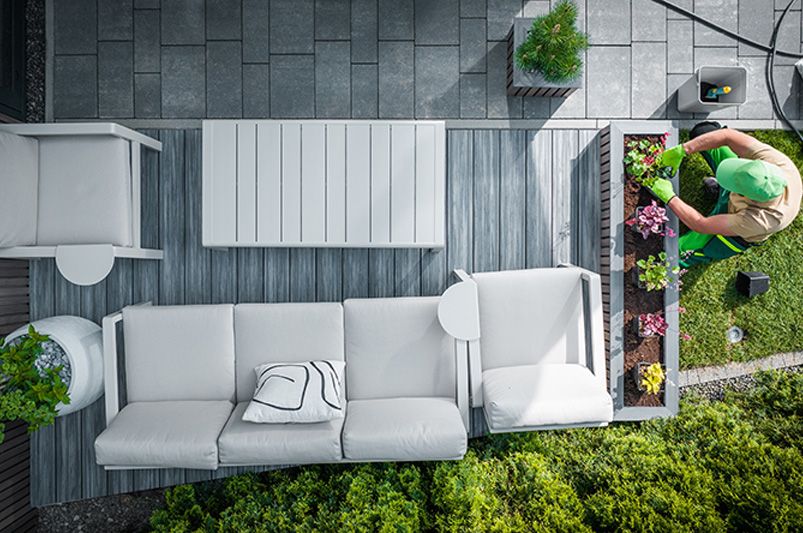
Got a small yard? No problem! The right design strategy can make even the tiniest outdoor space feel like an open, inviting retreat. With smart landscaping techniques—like vertical gardening, container grouping, and multi-use outdoor areas—you can turn a compact space into a lush, functional environment that feels bigger than it is.


Let’s explore how to design your small yard for maximum beauty and usability—and why ShrubHub’s design experts specialize in helping homeowners make every square foot count.
1. Go Vertical: Expand Your Garden Skyward
When you can’t grow outward, grow upward. Vertical gardening lets you transform blank walls and fences into living, breathing features. Beyond saving ground space, it adds depth, texture, and personality.
Wall-Mounted Planters and Trellises
A few well-placed vertical elements can redefine your yard’s proportions. Install wall-mounted planters filled with ferns, petunias, or herbs, or use trellises for climbing plants like clematis, jasmine, or honeysuckle. These create an illusion of height, while filling your yard with scent and color.
Pro Tip: For a dynamic look, vary the planter heights and use different pot materials—wood, metal, or clay—to create contrast and rhythm.
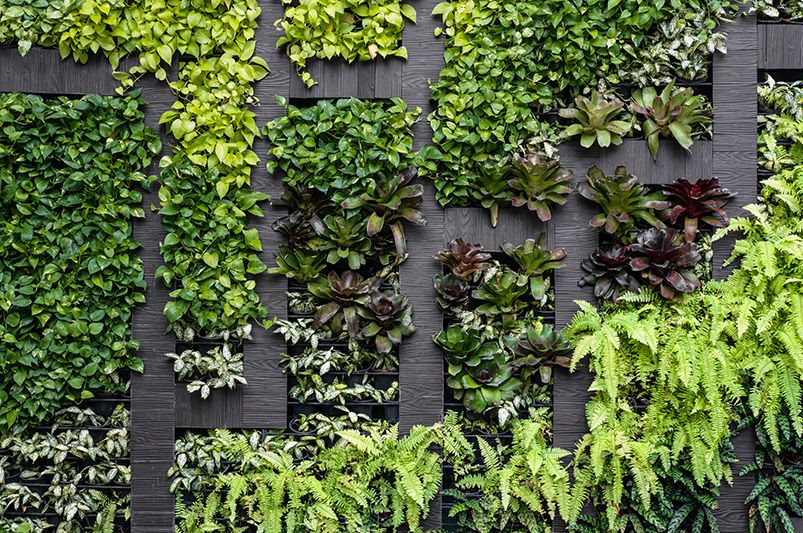
Living Walls: A Vertical Swath of Greenery
A living wall—sometimes called a green wall—is a stunning focal point that doubles as an environmental hero. It purifies the air, insulates against noise, and introduces a lush, garden-in-the-sky vibe. Consider hardy plants like succulents, mosses, or native ferns for year-round greenery with minimal upkeep.
2. Master the Art of Container Grouping
Container gardening is the backbone of small-space design. It allows flexibility, portability, and creative layering—all while keeping maintenance low.
Layer for Visual Depth
Use a three-tier system:
-
Low growers (like creeping thyme or sweet alyssum) up front
-
Mid-range plants (lavender, coleus) in the middle
-
Tall species (ornamental grasses or bamboo) in back
This creates a sense of depth without overcrowding. For patios or decks, try grouped clusters of pots at different heights to mimic natural landscapes.
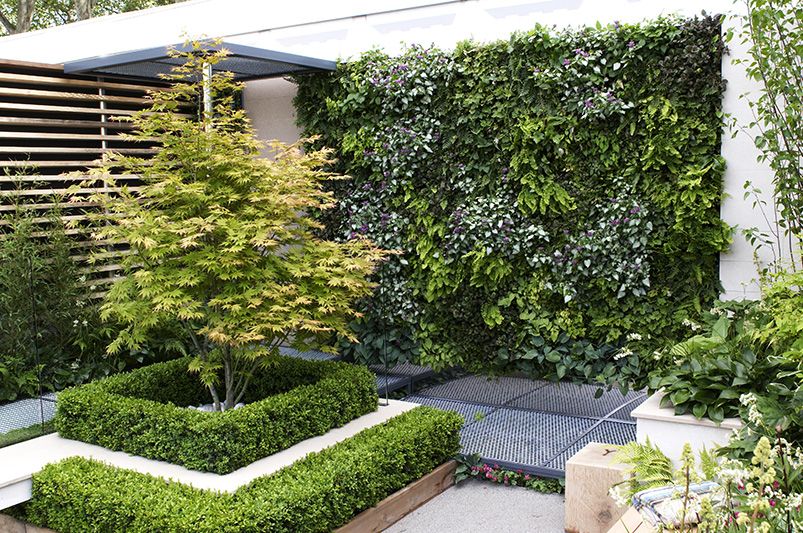
Match Containers to Your Style
Your pots and planters should complement your home’s design.
-
Modern aesthetic? Go for sleek, neutral concrete or matte black finishes.
-
Cottage charm? Terracotta and distressed clay fit the bill.
-
Tropical vibes? Think glazed ceramics in teal and coral tones.
The goal is to make your container groupings feel like an intentional part of your home’s visual flow—not just scattered pots.
3. Think Small: The Power of Dwarf Trees and Compact Plants
In compact yards, every plant must earn its space. Dwarf and compact varieties bring structure, beauty, and often seasonal color—without overwhelming your design.
Top Choices for Dwarf Trees
-
Japanese Maple: Elegant and compact, with dramatic seasonal color.
-
Dwarf Citrus Trees: Perfect for pots; fragrant blossoms and edible fruit.
-
Dwarf Conifers: Add evergreen structure year-round.
-
Compact Roses: Offer color and fragrance without sprawling growth.
These trees and shrubs provide scale and shade while staying manageable—perfect for small courtyards, patios, or garden corners.
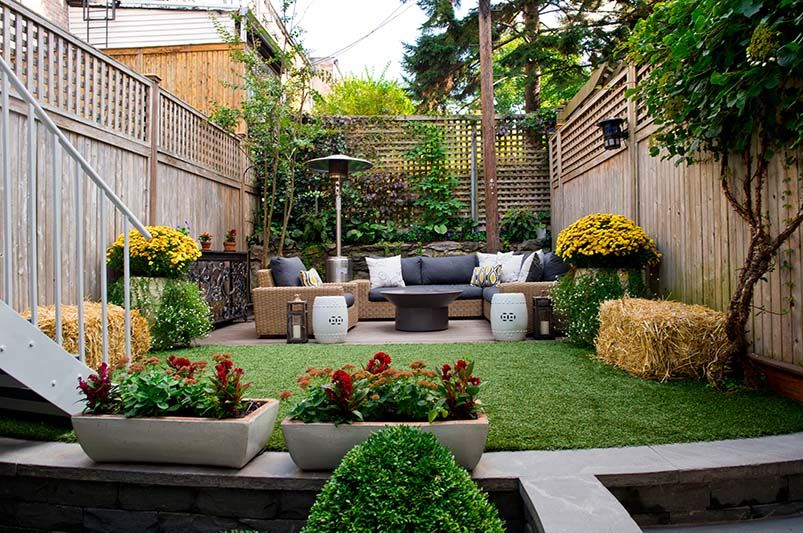
4. Design Multi-Use Outdoor Areas
Every square foot should work double duty. Whether you’re entertaining, relaxing, or gardening, multi-use outdoor areas make your small yard feel expansive and efficient.
Zoning Through Layout
Use pathways, planters, and changes in material to define areas:
-
A gravel walkway leading to a small café table zone.
-
A deck corner with a built-in bench that doubles as storage.
-
A pergola providing both shade and a vertical garden anchor.
These micro-zones create structure while preserving the sense of flow and openness.
Furniture That Works Hard
Choose foldable, stackable, or built-in furniture that saves space when not in use. Think a bistro set that tucks away or a raised garden bed that doubles as a privacy barrier.
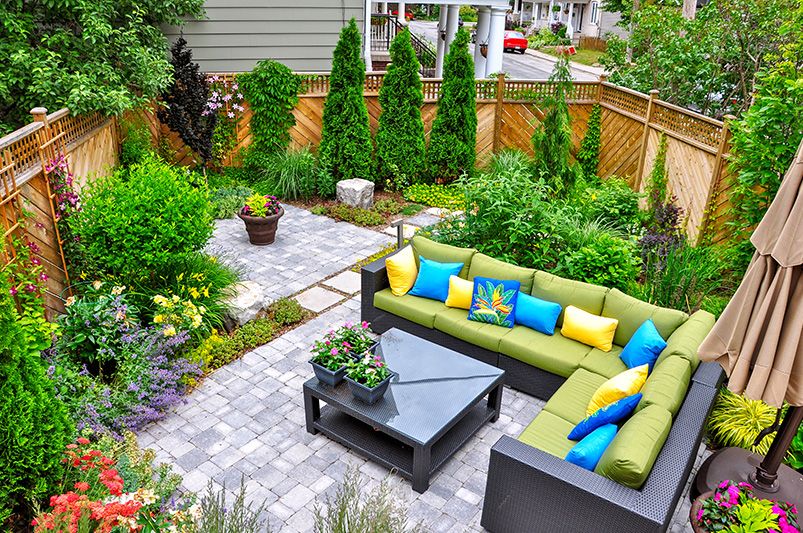
5. Add Layers of Light and Texture
Small yards come alive after sunset with thoughtful lighting. Use string lights, pathway lanterns, or solar uplights to highlight trees, garden walls, or planters. The layered lighting not only extends usability into the evening but visually expands the space.
Pair this with mixed textures—stone, wood, metal, and greenery—to create contrast and interest. The interplay of texture and light adds richness and depth, making your yard feel cozy yet open.
6. Create a Focal Point
Even the tiniest garden benefits from a visual anchor—a focal point that draws the eye and organizes the layout. This could be:
-
A small water feature like a bubbling urn
-
A sculptural container
-
A brightly painted bench or ceramic birdbath
Position your focal point where it can be viewed from indoors as well. This makes your living space feel larger, blurring the boundaries between inside and out.
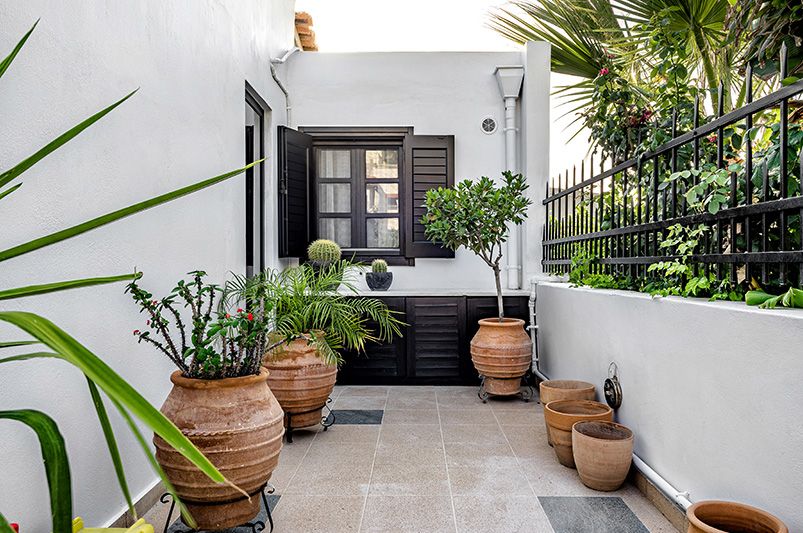
7. Work with ShrubHub’s Designers for Tailored Small-Space Plans
Every yard has potential—it just takes the right plan. ShrubHub’s expert designers specialize in custom landscape layouts for compact spaces, integrating vertical gardening, smart zoning, and scaled planting combinations that turn even postage-stamp plots into breathtaking retreats. Whether you dream of a mini tropical escape, a chic modern patio, or a lush cottage hideaway, ShrubHub brings it to life with 3D visualization and affordable design packages.
Download: “The Small Yard Big Impact Design Guide”
Learn how to transform limited square footage into a lush, layered paradise.
Inside this free ShrubHub guide, you’ll discover:
-
Design blueprints for small yards and patios
-
Recommended compact plants and dwarf trees
-
Tips on lighting, zoning, and vertical structure
-
Inspiration from real ShrubHub designs
Download Your Free Small Yard - Big Impact Design Guide Now
Your dream yard doesn’t need more space—it needs smarter design.
Let ShrubHub’s professional landscape designers help you maximize your outdoor potential with a customized 3D plan tailored to your small yard.
Start Your Landscape Design Today at ShrubHub.com
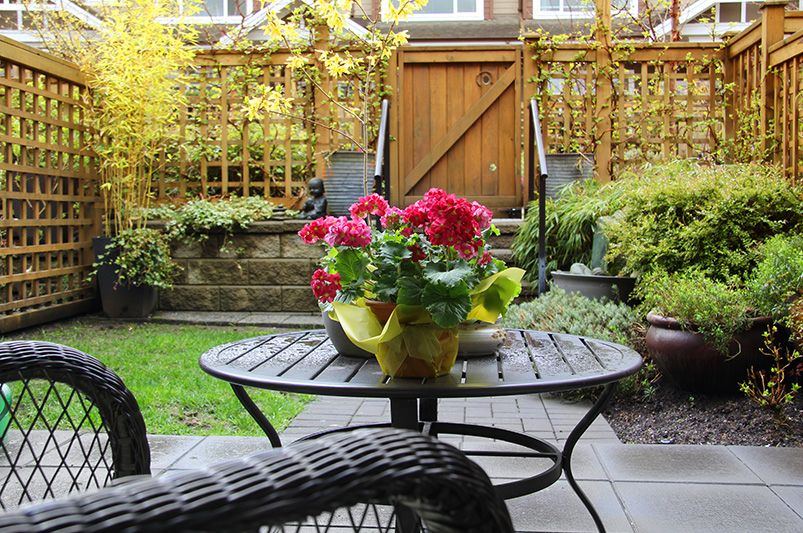
FAQs
1. What are the best plants for small yards?
Opt for compact shrubs, dwarf trees, and multi-functional plants like lavender or ornamental grasses. These offer texture and color without overwhelming your space.
2. How can I make my yard look larger?
Use vertical gardening, mirrors, and light-colored surfaces to create the illusion of space. Zoning with pathways or different materials also helps open up the layout visually.
3. Can container gardens thrive year-round?
Absolutely! Choose seasonal plants and rotate them quarterly. Evergreens, succulents, and dwarf conifers offer structure even in colder months.
4. What’s the easiest way to add privacy to a small yard?
Try tall planters, bamboo screens, or a vertical garden wall. These soften boundaries and create cozy seclusion without solid fences.
5. Do small yards need professional design help?
Professional designers—like those at ShrubHub—ensure your layout balances beauty and functionality, maximizing every inch while reflecting your lifestyle.


